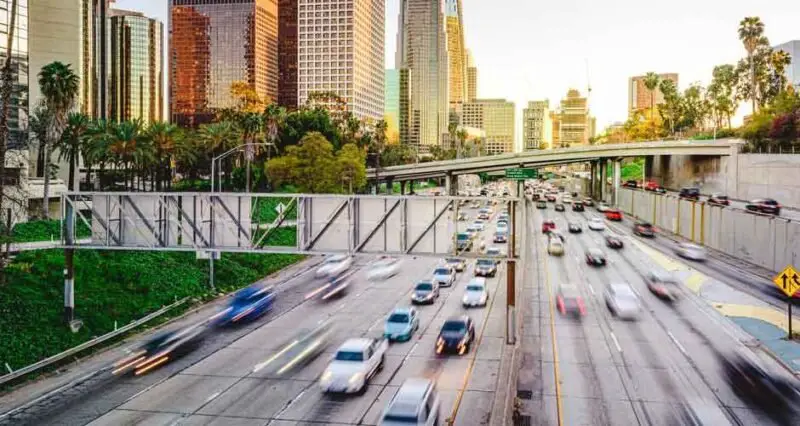
Driving on U.S. highways requires motorists to understand both the formal rules of the road and unspoken courtesies that contribute to a safe experience for everyone. While traffic laws provide the foundation of safe driving, adhering to the informal rules of the road as well creates a predictable environment with less unnecessary hazards. When drivers don’t adhere to both formal driving regulations and unspoken acts of courtesy behind the wheel, the odds of a crash and subsequent car accident lawsuit in Houston increase.
Lane Discipline and the Art of Passing
To keep traffic moving efficiently on the highway, it’s vital to stay in the proper lane for your speed and comfort level behind the wheel. Slower traffic should keep to the right lanes, while faster-moving vehicles should use the left lanes for passing. This practice helps drivers maintain consistent speeds without needing to make multiple lane changes.
When you are passing another vehicle, use the left lane only as long as you need to in order to safely overtake the other car. Staying in the left lane for longer than necessary can cause cars to pile up behind your vehicle, limiting the ability of other drivers to use the passing lane as intended.
Merging and Exiting with Courtesy
When two lanes merge into one, either due to highway design or lane closures, it’s important to be cautious as you change lanes. Zipper merging allows vehicles from both lanes to alternate into the active lane, minimizing confusion about who has the right-of-way at any given moment. This method also plays a substantial role in minimizing congestion, as drivers aren’t forced to make dangerous or unpredictable maneuvers to safely get into the lane they need to be in.
Beyond zipper merging, several courteous actions allow you to safely merge into another lane:
- Don’t speed up to close the gap: Working up to an unsafe speed makes vehicles already on the highway less likely to yield, which puts you and other drivers at risk of a collision.
- Maintain a steady speed: Don’t speed up or slow down abruptly when it comes time to merge. Keep a predictable, steady rate of speed that allows other drivers to account for where your vehicle will be.
- Use turn signals effectively: Activate your turn signal well in advance of a merge so other drivers know that you need to get over.
When it comes to getting off the highway, there are some tactics you can use to help other drivers anticipate your maneuvers:
- Signal your intention to exit early: Don’t try to cross multiple lanes of traffic at the last second. Use your turn signals and give yourself plenty of time to safely get to the rightmost lane so you don’t miss your exit.
- Gradual deceleration: Avoid sudden braking or swerving to slow down for an exit. Before you change lanes, check your blind spot for small vehicles, motorcycles, pedestrians, or other hazards.
- Match the speed of exiting traffic: Adjust your speed to merge smoothly with the traffic flow on the exit ramp.
Speed and Safe Driving Practices
You should always do your best to adhere to speed limits, except in conditions where reducing speed is necessary due to road or weather conditions. Speeding increases the risk of accidents and also disrupts the smooth flow of traffic. In particular, driving too fast in rain, fog, or on poor road surfaces significantly increases the likelihood of losing control of your vehicle.
Maintaining a safe following distance protects you if the car in front of you slams on the brakes or a sudden hazard puts you at risk of a collision. Tailgating significantly reduces your critical buffer zone and poses a major safety hazard. Always practice defensive driving to reduce your risk of getting into an avoidable wreck.
Some additional safe driving practices to consider include:
- Avoiding distractions: You should always be completely focused on the road, not your cellphone, conversations with passengers, or anything else.
- Maintaining your vehicle: Regularly check your car’s tire pressure, fluid levels, and ensure proper functioning of headlights, taillights, and turn signals.
- Being predictable: Avoid erratic lane changes, sudden braking, and aggressive driving behaviors.
- Using headlights during low-visibility conditions: When your visibility is reduced, be sure to turn on your headlights. They will help you see at dusk, dawn, and nighttime, as well as during heavy rain or fog.
Patience is one of the key elements of safe and highway driving. Traffic congestion and unexpected delays are inevitable. Avoiding aggressive maneuvers, using your vehicle’s high beams excessively, or honking unnecessarily reduces the risk of road rage incidents or collisions.
Adhering to Highway Etiquette Protects Everyone on the Road
By adhering to both the formal rules of the road and the unwritten courtesies we discussed in this article, drivers can contribute to a safer and more pleasant driving experience for everyone. Be sure to stay aware of your surroundings, drive defensively, and avoid driving in dangerous weather conditions. We hope this article helps you stay safe the next time you get on the road!

